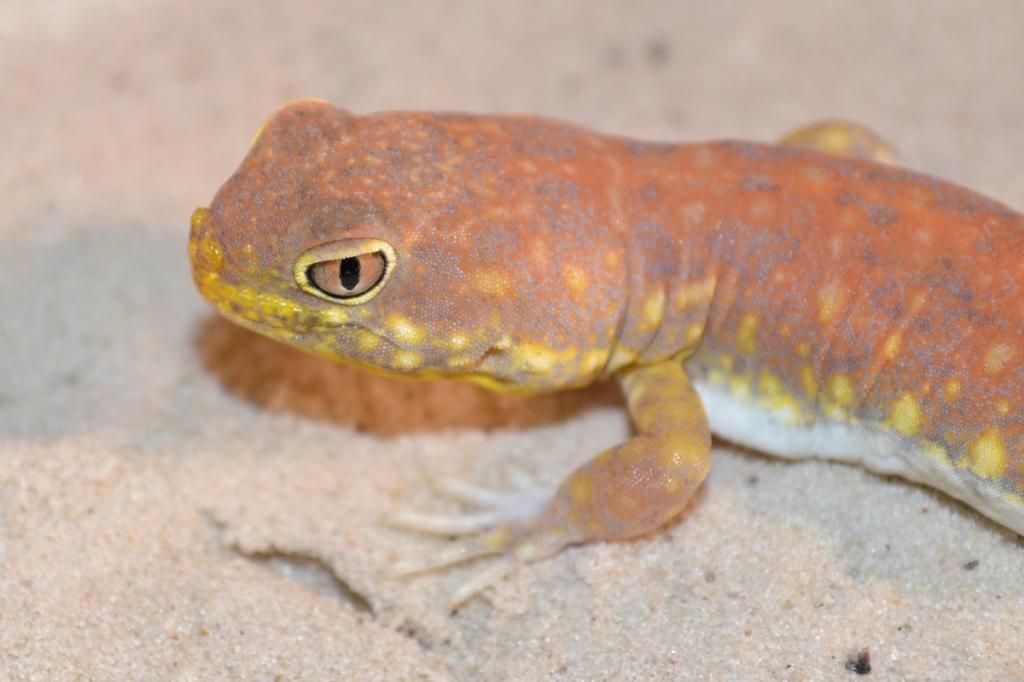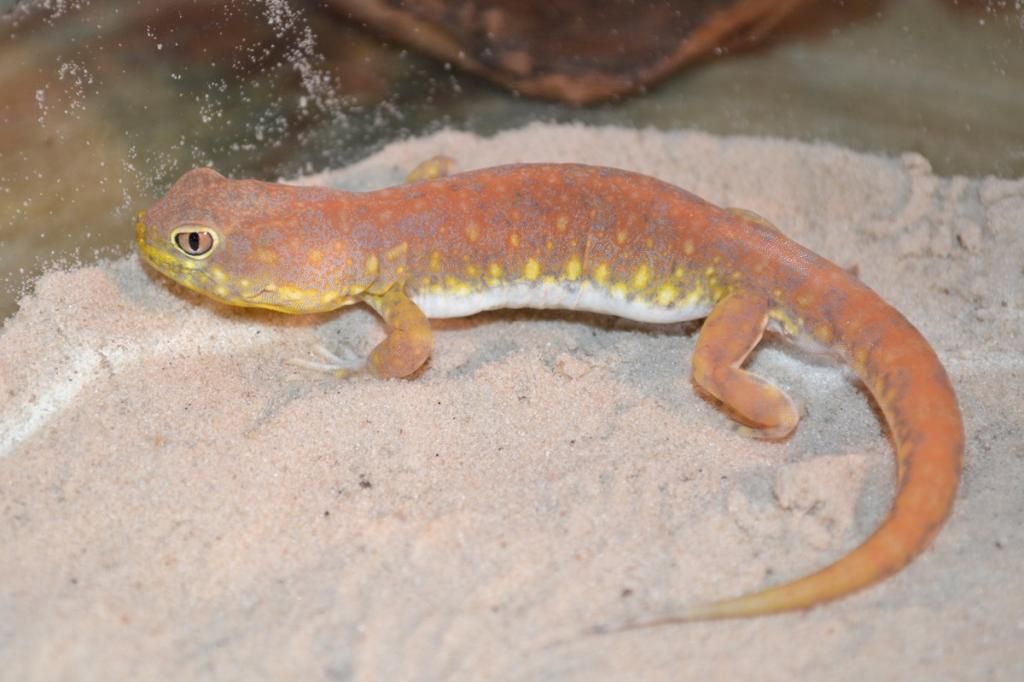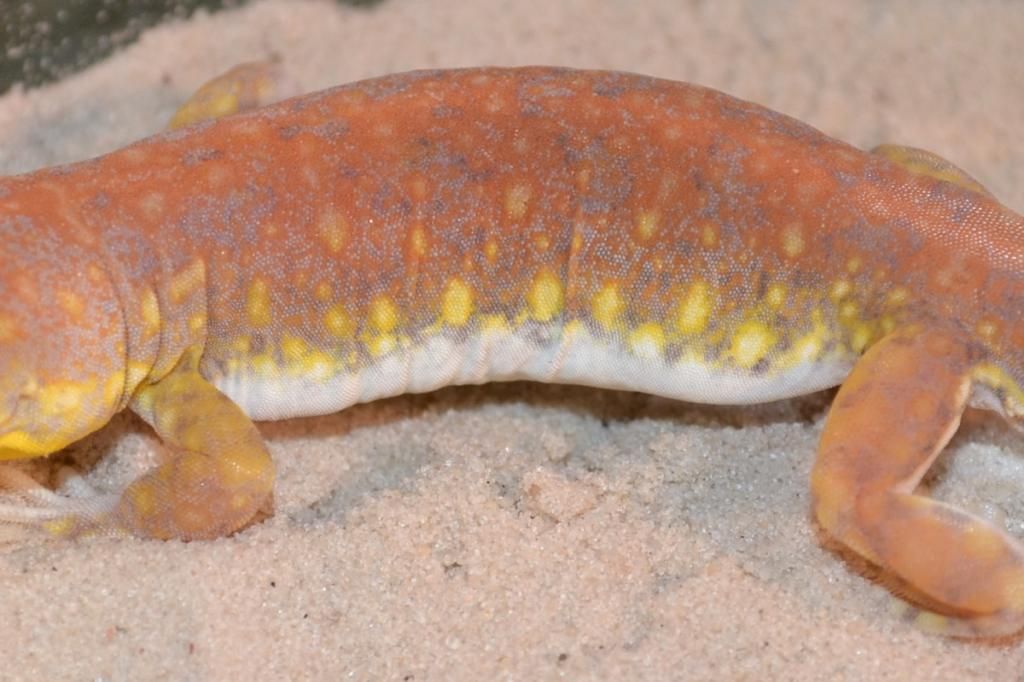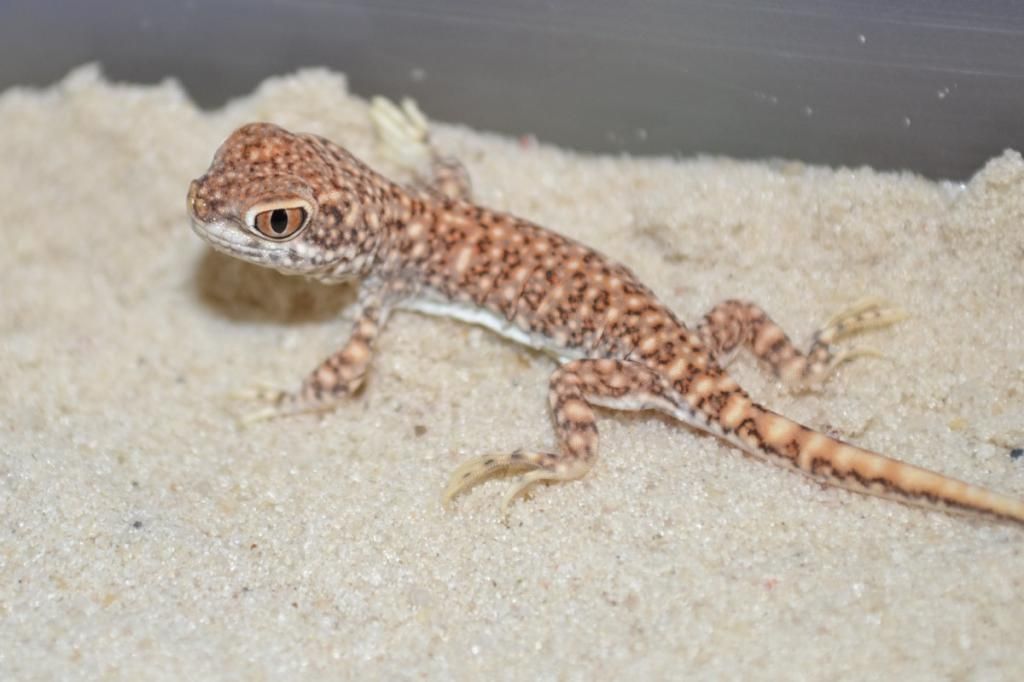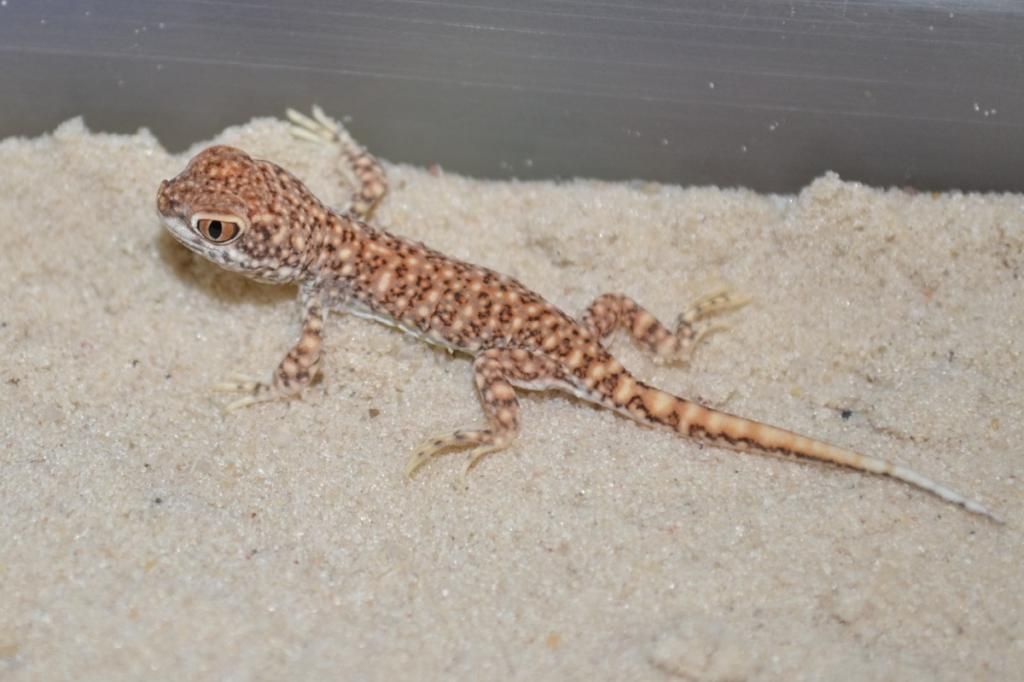I should probably explain my photo setup, as I do occasionally tend to get care suggestions based on what is seen in the pictures I post. I rarely take photos of my terrestrial geckos in their actual tanks / tubs, as the perspective is somewhat limited to an overhead shot. Hides, decor, poops, etc... also can clutter or detract from the photo. Instead, I have a modified tub I use for photo sessions with clean sand, and one "hinged" side that I can lower so that I can get my camera lens down for a more natural perspective of the animals at ground level. I rarely disturb my animals for photos, but when I do need some, I like to use this setup. I realize this can sometimes lead to assumptions that I have my geckos on the wrong substrate; too small of a tank; too sterile of an environment, etc... The geckos in question do have sections of PVC tubes, as well as small pieces of cork bark that they can burrow under. Their tubs are not opaque, but are in a rack which receives some amount of indirect lighting from the front. I do find however, that my P. kochi are not a shy species. I have many species that take cover at the first sign of light or activity in the gecko room. I find this sort of activity brings this species to the front of their tanks in anticipation of feeding. This is one of the things I enjoy about these geckos.
Herve, I do have one question about P. kochi for you. Do you observe a noticeable size difference between the sexes of this species? The male in the pictures above is obviously mature and ready for breeding. My female was quite a bit younger when I got her (not the unsexed one in the pictures above... that is now confirmed female, but is a year away from breeding size). My female is about 1/3 smaller than the male, but her rate of growth has either stopped or greatly slowed. She was a few months old when I got her, and I have had her for about a year, so she's probably somewhere between 15 - 18 months old. I haven't yet paired her up because the male is quite a bit more robust than her, but perhaps this is just a natural characteristic of this species? Or does she have some growing to do yet?
